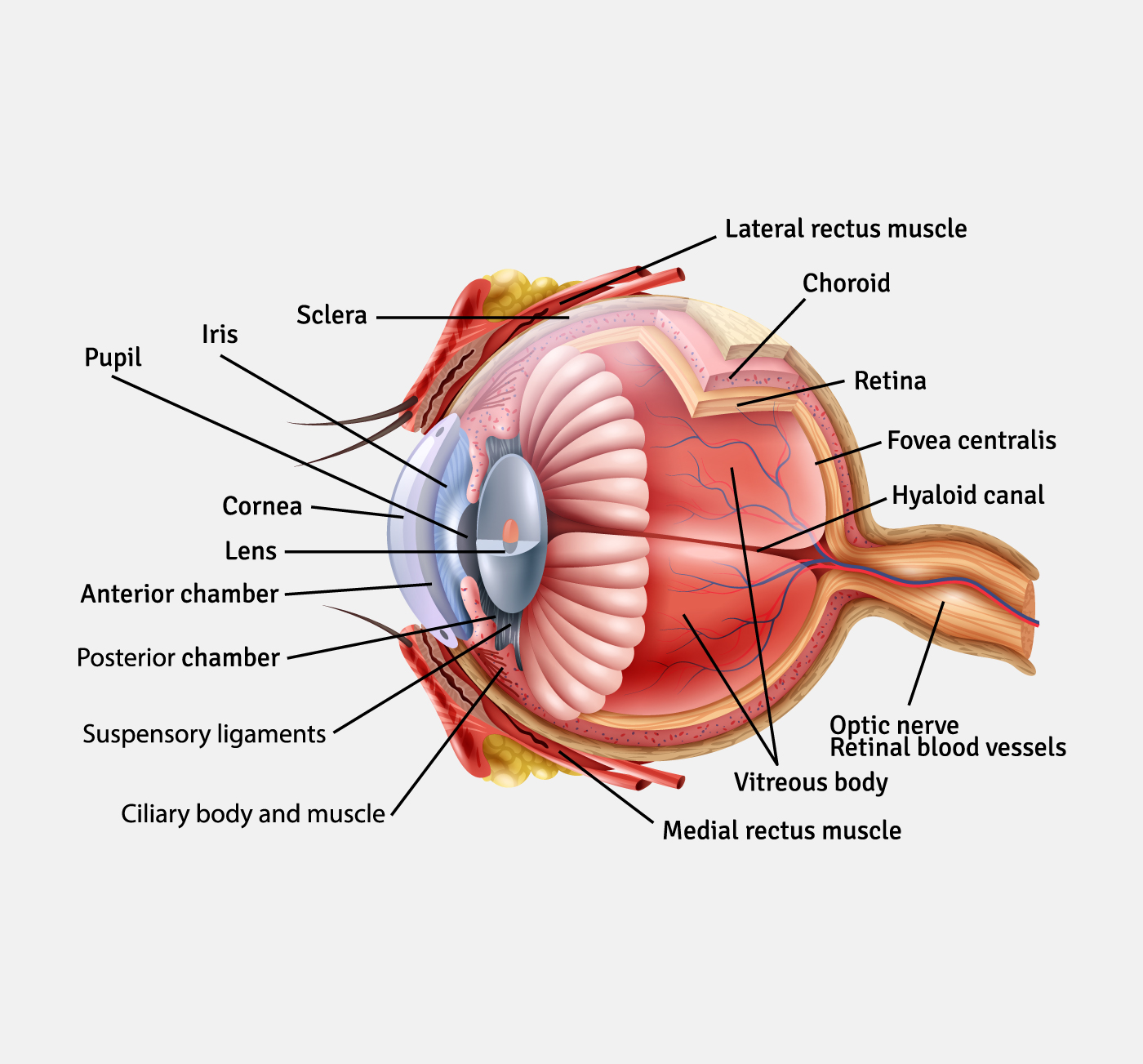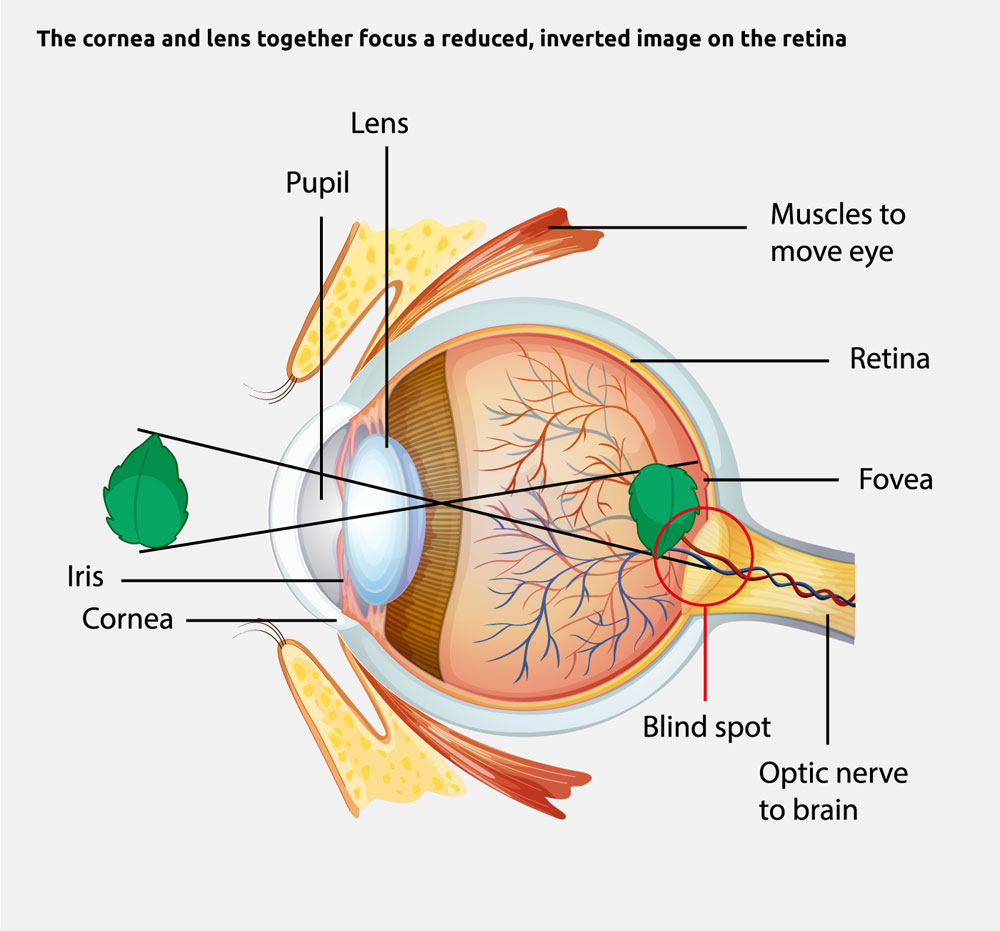THE EYE

Cornea
Clear, transparent structure at the front of the eye structure. It is the primary refractive surface of the eye. The cornea focuses light into the eye.
Iris
Colored part of the eye. It’s surrounded by muscles that help regulate the amount of light enters the eye. The Pupil, the dark black center in the middle of the Iris. It looks black because the light passing through the eye gets absorbed by its tissues.
Crystalline lens
It is located inside the eyeball just behind the iris. This transparent structure focuses light rays onto the retina. The crystalline lens adjusts by changing its shape to help the eye to focus at different distances.
Retina
It is the nerve layer that lines the back of the eye. It senses the light focused by the cornea and the crystalline lens and creates impulses that are sent through the optic nerve to the brain. It contains millions of light receptors that also known as photoreceptors.
Read More
The spherical shape of the eye is maintained by a transparent, jelly-like substance that fills about 2/3 of the space within the eye. This material is Located between the crystalline lens and the retina and called “aqueous humor”
Macula
Approximately 5.5 mm in diameter area of the retina with the Fovea at the center. This macula has the highest density of photoreceptors and is free of major blood vessels. The fovea is responsible for sharp and detailed vision.
Choroid
known as the vascular layer of the eye, provides oxygen and nourishment to the retina.
Sclera
also known as the white of the eye, is the protective outer layer of the eye.
Ciliary body
It is a part of the eye that includes the ciliary muscle and lies Just behind the iris. The ciliary body is attached to the lens by connective tissue called the zonular fibers. Relaxation of the ciliary muscle puts tension on these fibers and changes the shape of the lens to control focusing of the light on the retina at various distances (a process called accommodation)
Eye muscles and their function
Because only a small part of the eye –the fovea –provides sharp vision, our eyes have to move to follow a target. The movement of each eye is controlled by six tiny muscles that control the movement to allow us to look up, down, left, or right and to rotate in and out.
These six eye muscles pull a heavy load of focusing, converging and accommodating for clear vision and depth of field with three actions happening simultaneously. The lens changes its shape, the pupil changes its size and the eyes rotate to keep focus
VISION
How the Human Eye Forms an Image
Light enters the eye through the Cornea which acts as a convex lens and does most of the refracting in the eye. Light is then, continue through the pupil which controls how much light enters the eye and passes through the eye-lens. The lens is convex on both sides. It contracts and relaxes to control the amount of refraction that occurs and to move the focal point to make fine adjustments for near and far objects.
Light passes through the clear center of the eye and strikes the Retina which contains specialized cells that respond to light. Some of these cells send signals through the optic nerve to the brain. The brain interprets these signals as images.

